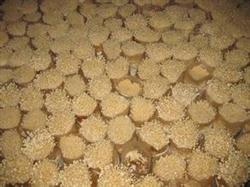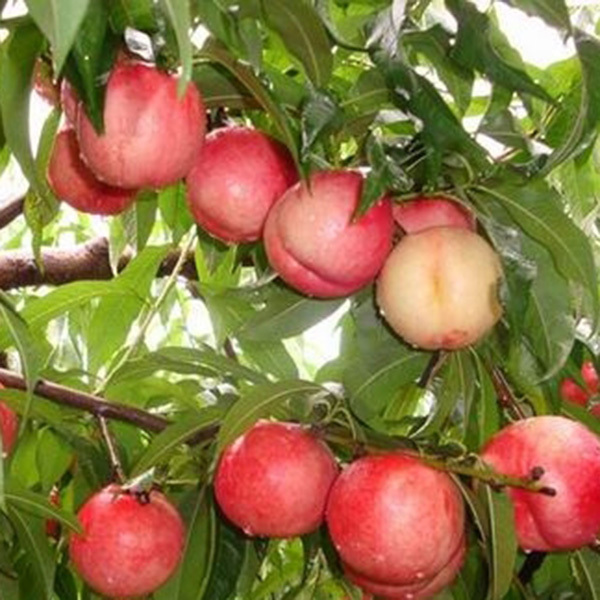What about the abnormal mushrooms in the cultivation of hericium Erinaceus

In the cultivation of hericium Erinaceus, because the cultivation management is out of control, abnormal mushroom bodies often appear, which directly reduce the commodity value and affect the economic benefits of producers, so it has become a difficulty in production. This paper introduces the type, posture, causes and avoiding measures of abnormal mushroom. First, bald and non-thorny type: the mushroom body is branched in clusters, enlarged, the surface is wrinkled and rough, without bristles, the meat is crisp, slightly yellowish brown, and the smell is normal. The main reason is that the temperature is on the high side, the humidity is on the low side, the water evaporation of the fruiting body is often too large under the condition of 25 ℃, and the humidity does not keep up in time, which leads to the formation of Pleurotus ostreatus. Preventive measures: pay attention to temperature control and moisturizing. When the temperature exceeds 25 ℃, the mushroom bed cultivation in the field should remove the mulch film in the morning and evening to ventilate, open the two covers during the day to make it breathable; border and ditch irrigation to reduce ground temperature, space spraying of atomized water to increase humidity, maintain relative humidity more than 90%; and thicken the shade canopy, reduce sunlight penetration, reduce water evaporation. Second, coral clustering type: the mushroom body is clustered with multiple branches at the base of the mushroom body, which is shaped like coral, and a root-like fungal cord can be seen connected to the culture medium. Some of the seed entities die in the mushroom stage, some can continue to grow and develop, and the top of the branchlets continue to expand, forming multiple states of small bodies. The main reason is that the deposition of too much carbon dioxide concentration stimulates the continuous differentiation of the stalk, inhibits the development of the central part, resulting in the formation of irregular butterfly, and also because the culture material contains aromatic compound germicidal substances, so that the mycelium growth is inhibited or stimulated; often because of heat preservation and moisture preservation, ignoring ventilation and ventilation, in this kind of saturated humidity and still air conditions, forcing the fruit body to develop abnormally. Preventive measures: (1) strengthen ventilation and improve environmental conditions. (2) in the selection of culture materials, attention should be paid to the removal of trees containing germicidal substances, such as fir, pine, camphor, locust and so on. (3) A coral-like fruiting body has been formed, which can be scraped off together with the surface culture material at an early age, and then cultured again, and the mushroom can be produced as usual. Third, abnormal color: the mushroom body turns yellow, the spines are short and thick; some fruiting bodies are red, or the young mushrooms are pink from the beginning to maturity, and the mushroom body tastes bitter. The main reason for this kind of color change is that the temperature is on the low side, often because of the cultivation in autumn and winter, the temperature drops suddenly, the growth stage of the seed is less than 10 ℃, the mushroom body turns red, and the color deepens with the decrease of air temperature. Some due to ventilation, the fruiting body is stimulated by direct current wind, and the mushroom body is yellow. For mushrooms with discoloration, we should distinguish the etiology and symptomatic treatment. If it is caused by low temperature, when arranging inoculation, it is necessary to consider that the local temperature should not be lower than 14 ℃ about 25 days after vaccination, which is the boundary to calculate the best inoculation period, so that the damage caused by low temperature can be avoided. Heating method: field planting can cover the film, ventilate when the temperature is high at noon, and dilute the cover to attract light to increase the temperature; at the same time, try to avoid ventilation directly blowing on the mushroom body, or on the mushroom bag at the tuyere, cover with wet gauze. Fourth, atrophy and mildew type: the mushroom body grows normally in the early stage, the middle prickles wilt, the mushroom body shrinks; some mushroom bodies turn brown and moldy. The former is often due to high temperature, dry air, obvious lack of water, so that stop growing, gradually shrink and dry up. Should spray water space in time, a small amount of spray on the mushroom body to restore it. If the mushroom body is found to be moldy, it is a disease or mold invasion, should strengthen ventilation, cooling. Mildew has been dug up in time, and local application of 3% bleach water or 1% white ash water to control the spread.
- Prev

Cultivation of pure white Flammulina velutipes in material bag
1. Technological process cut bag → mix → bag → sterilization → inoculation → hair bacteria → bud → mushroom production technology 1. Cut the plastic bag used for cultivating mushrooms into small segments of 30cm to 35cm long, one end is tied up with a rope to make it into a bag. Bags of 12kg and 13kg are needed per ton. 2. Mix raw materials.
- Next

Planting techniques of nectarine
Planting techniques of nectarine
Related
- Fuxing push coffee new agricultural production and marketing class: lack of small-scale processing plants
- Jujube rice field leisure farm deep ploughing Yilan for five years to create a space for organic food and play
- Nongyu Farm-A trial of organic papaya for brave women with advanced technology
- Four points for attention in the prevention and control of diseases and insect pests of edible fungi
- How to add nutrient solution to Edible Fungi
- Is there any good way to control edible fungus mites?
- Open Inoculation Technology of Edible Fungi
- Is there any clever way to use fertilizer for edible fungus in winter?
- What agents are used to kill the pathogens of edible fungi in the mushroom shed?
- Rapid drying of Edible Fungi

